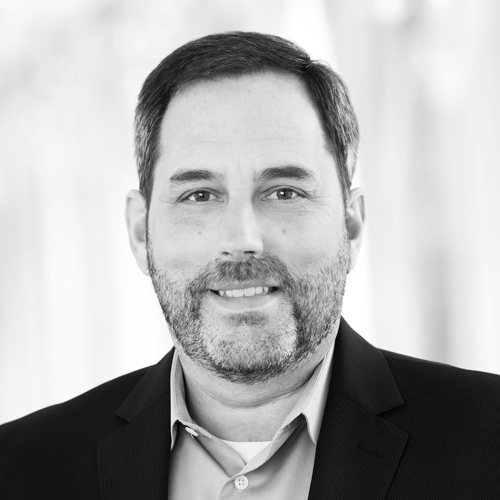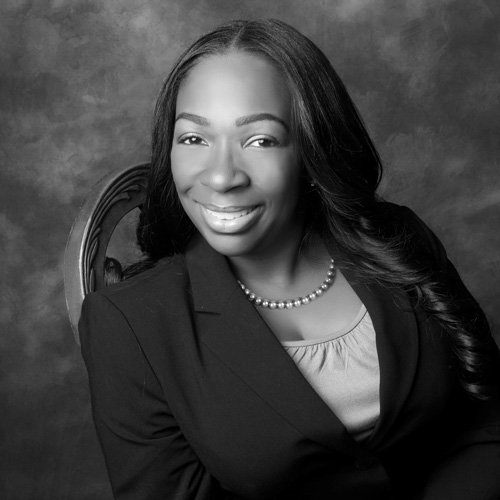When a young Syrian college student sought help fleeing that country’s brutal conflict last year, he received it from what may seem like an unlikely place: the attorneys of global science powerhouse 3M, headquartered in St. Paul, Minnesota.
Working with the International Refugee Assistance Project (IRAP), the 3M Pro Bono Committee—chaired by associate general counsel Maureen Harms—tapped into 3M’s extensive network to help the young man leave Syria and eventually obtain a residency permit in Europe. Three branches of 3M’s international pro bono team—the United States, United Arab Emirates, and Germany—joined forces to help this man start a new life.
The connection between human rights and legal work in the healthcare industry is not such a stretch, according to Harms, whose background spans a United Nations internship and pharmaceutical sales. “The heart of human rights is about standing up and giving a voice to those who don’t have a voice,” she says. “Healthcare is also about advocating for patients: giving them a voice and giving customers confidence that treating patients with 3M products will improve their quality of care and help them heal—maybe completely.”
For almost four years, Harms has led the legal team’s volunteer efforts to represent low-income and underrepresented clients in housing evictions, asylum and immigrant naturalization, foster care issues, and other matters through its partnerships with the Volunteer Lawyers Network, Southern Minnesota Regional Legal Services, Children’s Law Center, and IRAP. It may bear little resemblance to their in-house function of advising on business transactions, commercial disputes, and advertising claims, but Harms explains that partner organizations are a key to helping 3M volunteers navigate the variety of issues, clients, and social settings involved in pro bono representation, which brings additional meaning to their everyday work.
“It opens up your mind to think differently,” Harms says. “Our lawyers gain significant experience learning how to deal with different kinds of people, understanding how to work outside of their core competence. They can see themselves contributing in a real, significant way to make a difference, and I think the people who have done it surprised themselves at the value they can bring.”
“At 3M, within two calls, you can get the world’s expert on a particular topic. We pride ourselves in offering the same quality of legal service within our global legal network.”
The genesis of 3M’s pro bono ethos came in 1982, when the then-CEO heard a radio report discussing a legal system crisis: the lack of support for a growing population that couldn’t afford legal representation. He teamed up with the then-general counsel to influence the Minnesota State Legislature to create additional funding for legal services. “A commitment to fairness in our judicial system emanated from them, and to this day, it encourages individual 3M lawyers and other legal professionals to participate in pro bono,” Harms says.
That tone at the top pervades three decades later, according to Harms. She recalls how the current general counsel, Ivan Fong, recently rolled up his sleeves to work with her on a social security case. “He committed to making a mark and showing others not only that it could be done, but that it also needs to be done,” Harms says. “It’s a fundamental part of the fabric of our communities to have a functioning legal system, and this means people deserve to be represented whether or not they have money. It is a significant kind of safety net that we provide.”
The example set by leadership sustains the Pro Bono Committee’s diversification across the legal department year after year. 3M lawyers logged more than 2,300 hours of service in 2015 with several nonprofits. Harms says each case is selected due to time, complexity, and interest. “You’ve got to be open enough to try different things to engage people because it’s all volunteer and everybody has a lot on their plate,” she explains. “To get them to be willing to spend a little more time at work to do something like this, it’s got to be for a cause they believe in.”
Recently, the 3M committee partnered with Animal Folks MN to collect and analyze data from animal cruelty cases to build a better system of animal protection. “It was really interesting because, before this, nobody thought how protecting animals could present a real pro bono client,” Harms says. “After a colleague expressed a strong interest in starting this program, she was able to tap a lot of people, including nonlawyer staff members, who hadn’t ever done pro bono.”
3Mgives at a glance
Paving the way for future trends, 3M was one of the first corporations to establish its own foundation in 1953. Today, the company continues to give back to the communities it touches.
3Mgives focuses on three areas of impact: education, community, and the environment. With education, it seeks to increase student interest and achievement in science, technology, engineering, and math (STEM). The company’s 3M Visiting Wizards program has brought science demonstrations and hands-on activities into the classrooms of more than eight hundred thousand students. In the community, 3M seeks to improve standards of living by supporting initiatives that help underserved families with basic needs, preparing youth for success, increasing access to arts, and contributing to global humanitarian efforts, such as disaster relief. With the environmental focus, the foundation seeks to make a lasting positive impact on the earth and promote science-based environmental education.
In 2016 alone, the company contributed more than $60 million and 300,000 volunteer hours to efforts across all three focus areas.
3Mgives—the company’s social investment arm—is working with Harms and others on a new pro bono program to deploy professionals to a select group of nonprofits around the world. That means that nonprofits in need of a particular expertise—not only legal services—can work with 3M’s engineers, marketers, business executives, and others to complete their missions. “There is a lot of excitement around this,” Harms says. “It’s another innovative example of 3M’s vision: 3M Science. Applied to Life.”
This notion of collaborating across functions and geographies—whether in business or in community service—is core to how 3M operates as a company.
Harms has worked with several 3M businesses and functions during her almost two decades with the company. She is currently with the 3M Health Care business group, so she knows firsthand the importance of communication and collaboration between departments.
“When a lawyer, a financial advisor, an engineer, or any professional talks in the language of business, they enable understanding and teamwork. Businesspeople appreciate what you’re saying because they can hear it and understand it,” Harms says. “When advising on business decisions, we might ask, ‘How do you think your customers are going to look at you if it turns out this way?’ The in-house lawyer uses alignment to uncover opportunities.”
To maintain that sense of collegiality, the legal department adheres to a “we culture” versus a “me culture.” Harms recalls what she heard when interviewing for a position at 3M almost twenty years ago: “A senior lawyer said to me, ‘You know, when I get back to my office, the first calls I return are those from my colleagues,’” Harms recounts. “It really struck me. We provide the best service to our clients because we bring great minds together to solve problems that no one of us alone could do as well.” She cites the legal department’s collective responsibility as the key to performing their highest quality work.
3M is creating a pipeline of engaged, team-oriented lawyers around the world. Harms describes this breed of lawyer as “the superb athlete, not the star basketball player.” Well-roundedness is encouraged as business partners and pro bono volunteers. 3M lives by the principle formed more than one hundred years ago by longtime 3M chairman William McKnight: hire good people and let them do their thing. “We hire good people, and they’re given a lot of responsibility and autonomy from a very early stage in their career here,” Harms says. “It creates an environment that gives talented people challenging work and an opportunity for continuous improvement.”
The healthcare legal team comprises five lawyers and two paralegals in the United States, who work with legal subject matter experts, such as IP lawyers, and other lawyers stationed around the world. Harms predicts that the legal needs of businesses across the world will have increasingly more in common, requiring more universal approaches, terms, and solutions. She believes that the passion, diversity, and expertise displayed by 3M’s global legal team, paired with game-changing technology, will continue to set their legal team apart.
“The scientists here at 3M have really set that example,” Harms says. “Within two calls, you can get the world’s expert on a particular topic. We pride ourselves in offering the same quality of legal service within our global legal network.”
Thanks to that remarkable aptitude and philanthropic attitude, 3M legal talent supports not only healthcare and 3M’s other businesses, but also the unrepresented around the world who need a voice.

